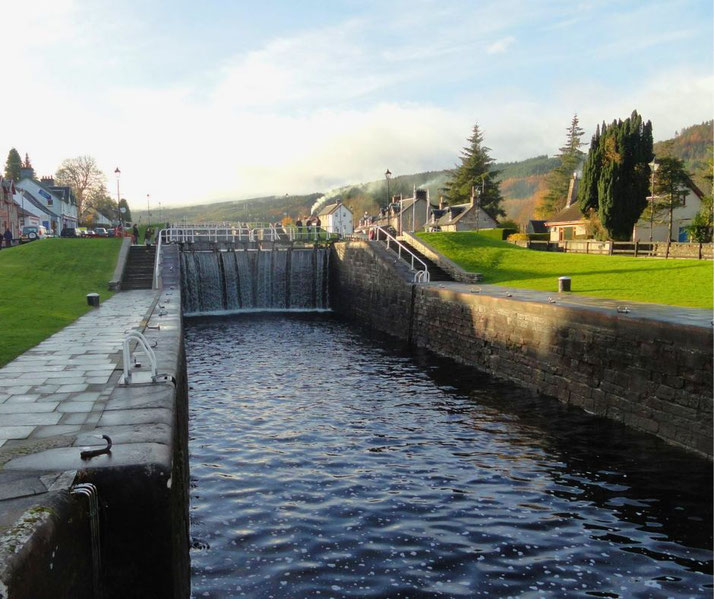Dramatic changes in transportation during the Industrial Revolution

The Industrial Revolution was a time of great transformation in Britain. Not only did it see the growth of factories and the rise of new, powerful businessmen and entrepreneurs, but it also saw a radical change in the way that people traveled around the country.
In this article, we will take a look at how traditional transport methods were replaced by canals, roads and railways during the Industrial Revolution.
Traditional transport
Before the Industrial Revolution, people could travel over land by their own two feet, or by using animals such as horses or donkeys.
Additionally, they had access to basic wheeled vehicles, such as carts and wagons.
This meant that journeys could take a very long time and were often quite difficult.
These methods also meant it was only possible to transport small amounts of goods at any one time.
However, most roads were no better than simple dirt tracks. When it rained, traveling was significantly slowed, and it limited the number of goods people and horse-drawn carts could carry without getting stuck.
Due to the slow speed of these means of transport, most people never traveled more than a few miles from their homes.
This meant that people in different parts of the country were very isolated from one another and that it was difficult for goods to be transported long distances.

Canal Mania
The Industrial Revolution saw the development of canals as a means of transporting goods around the country.
Canals are man-made waterways that are wide enough for boats to travel down.
They were first developed in France in the early 1700s, and soon spread to other parts of Europe.
Many businessmen saw canals as a way of boosting trade and expanding their businesses.
As a result, many canals were built during this time, including the famous Bridgewater Canal, which was completed in 1761.
Canals could carry much more cargo than traditional methods, and they could do so much more quickly.
The growth of canals during this period was fueled by 'canal mania', a term which refers to the enthusiasm for canal building.
In Britain, canal building exploded during the late 18th and early 19th centuries, with peak canal mania in the 1790s.
Canals were often built by private companies who hoped to make a profit from them.
Many of these canals were not very successful, and some ended up going bankrupt.
However, some canals became very popular and played an important role in transporting goods around the country longer term.

Development of new roads
As well as canals, the Industrial Revolution also saw the development of new roads.
Roads became increasingly important during this time, as they allowed businessmen to transport their goods from factories to ports more quickly and easily than ever before.
One of the most important changes in road building was the creation of 'turnpike trusts'.
A 'turnpike trust' was a group of businessmen who were responsible for building and maintaining roads.
They raised money by charging people to use the roads and used this money to pay for the construction and upkeep of the roads.
The first major new toll road in Britain was opened in 1727 on a road between London and Bath.
Railways
George Stephenson developed the first modern steam train in the 1820s and by 1830, his new locomotive, called the 'Rocket', was operating between Liverpool and Manchester Railway.
Several inventors contributed to the development of the steam locomotive before Stephenson, including Richard Trevithick who built the first full-scale working railway steam locomotive in 1804.
The first commercial railways were built in Britain in the 1820s. These early railways were called plateways because they consisted of iron plates that ran along the ground.
They were used to transport goods from place to place and proved to be very successful.
The first public railway was opened in the northeast of England in 1825. It was built to carry coal from the mines near Darlington to the city of Stockton.
The Stockton and Darlington Railway was not solely dedicated to carrying coal; it was also used to transport passengers, making it the world's first public railway to use steam locomotives.
Then, the first dedicated passenger railway line was opened in 1830, and it quickly became popular with passengers traveling between London and Manchester.
The height of railway expansion in Britain took place in the 1840s and 1850s. This was a time when many new railways were built, including the London to Birmingham railway line.
By 1860, there were more than 9000 miles of railway track in Britain, and this number continued to grow rapidly in the years that followed.

Further reading
What do you need help with?
Download ready-to-use digital learning resources
Copyright © History Skills 2014-2025.
Contact via email
With the exception of links to external sites, some historical sources and extracts from specific publications, all content on this website is copyrighted by History Skills. This content may not be copied, republished or redistributed without written permission from the website creator. Please use the Contact page to obtain relevant permission.





